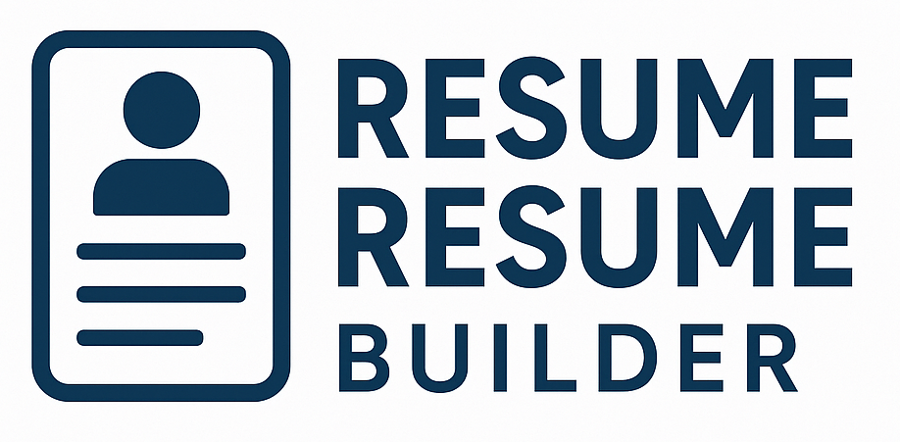The Career-Changer’s Guide: Using a Resume Builder When You’re Switching Industries
October 25, 2025 at 4:45 pm
Changing careers can be both exciting and intimidating. Whether you’re moving from finance to tech, teaching to marketing, or hospitality to human resources, one of the biggest challenges is translating your existing experience into language that makes sense in your new field. This is where a resume builder can become a powerful ally — if used correctly. A well-structured template can help you reframe your skills, highlight transferable experience, and present yourself as a strong candidate, even without direct industry experience. Here’s how to use a resume builder effectively when you’re making a career change.
Rethink Your Resume Format
When switching industries, your traditional chronological resume — which focuses on job titles and dates — might not be your best option. Instead, consider using a functional or hybrid format, which emphasizes your skills and achievements over specific roles. Many resume builders offer these options.
A functional format allows you to group experience under skill-based categories, such as “Project Management,” “Client Relations,” or “Technical Proficiency,” instead of listing positions in order. This helps recruiters quickly see that you have the relevant abilities, even if your job titles come from a different field. A hybrid layout still includes a work history section but gives more space to transferable strengths. Using a resume builder, you can easily select a layout that shifts the focus toward what matters most — your potential in the new industry.
Identify and Emphasize Transferable Skills
The key to a successful career transition is recognizing the skills that cross industries. A resume builder can make this easier by providing pre-set sections for “Core Skills” or “Key Competencies.” Use these areas strategically to showcase abilities like leadership, problem-solving, communication, project management, or data analysis — all of which apply to many career paths.
For example, if you’re moving from customer service to sales, highlight your experience managing client relationships, resolving issues, and achieving satisfaction targets. If you’re moving from teaching to corporate training, focus on your skills in public speaking, curriculum design, and mentoring. Use specific examples in your bullet points to prove these abilities in action.
Tailor Each Version of Your Resume
A common mistake among career changers is using one generic resume for all applications. Every industry has its own set of priorities and buzzwords, so it’s crucial to customize your resume for each new opportunity. Resume builders make this simple — you can create multiple versions of your resume and modify your professional summary, skills, and job descriptions for different roles.
Study several job descriptions in your target field to identify frequently used terms and phrases. Integrate those keywords naturally into your resume to increase your chances of passing through applicant tracking systems (ATS). This small effort shows employers that you’ve done your homework and are serious about the career switch.
Use Your Professional Summary Strategically
The professional summary is one of the most important sections for career changers because it’s your opportunity to explain the “why” behind your transition. Instead of focusing on your past job titles, emphasize your motivation, transferable expertise, and readiness to contribute to the new field.
For example, rather than writing, “Experienced teacher seeking new opportunities,” you might write, “Educator with 8 years of experience designing engaging learning programs, now transitioning into corporate training to apply communication and instructional design skills in a business environment.” Resume builders make it easy to customize this short paragraph, but the content should always reflect your career story — not just your experience.
Showcase Relevant Achievements and Projects
Even if you haven’t worked directly in your target industry, you likely have relevant achievements that can strengthen your candidacy. Use your resume builder to add a dedicated “Projects” or “Accomplishments” section. This is an excellent place to include examples that demonstrate your capability in the new area.
If you’ve completed courses, certifications, or personal projects related to your new field — such as coding bootcamps, marketing campaigns, or business case competitions — list them prominently. Employers value initiative, and showing that you’ve already taken steps to build new expertise signals commitment and adaptability.
Highlight Continuous Learning and Certifications
Career changers often need to prove that they’re actively developing the right skills for their new industry. Many resume builders include a “Certifications” or “Professional Development” section — use it to your advantage. Include any online courses, workshops, or certificates that relate to your target field. For example, if you’re moving into data analytics, list courses in Python, Excel, or statistics. If you’re pivoting into marketing, mention certifications in Google Analytics or SEO. These details show employers that you are proactive and eager to learn.
Keep the Design Simple and Professional
When changing industries, it’s best to avoid overly creative or unconventional designs unless you’re entering a creative field like design or media. A clean, professional layout ensures your content is easy to read and ATS-friendly. Choose a template that balances structure and readability, with consistent formatting for headings, bullet points, and spacing. Focus on clarity — you want recruiters to quickly grasp the value you bring, not be distracted by visuals.
A career change can open new doors, but it requires a thoughtful approach to how you present yourself. A resume builder can be a powerful tool to make this process smoother, helping you focus on your strengths and reshape your experience for a new audience. By choosing the right format, highlighting transferable skills, tailoring your message, and demonstrating continuous learning, you can turn your resume into a bridge between your past experience and your future career goals. Remember, employers aren’t just looking for experience — they’re looking for potential, motivation, and the ability to adapt. With a carefully crafted resume, you can show them all three.
